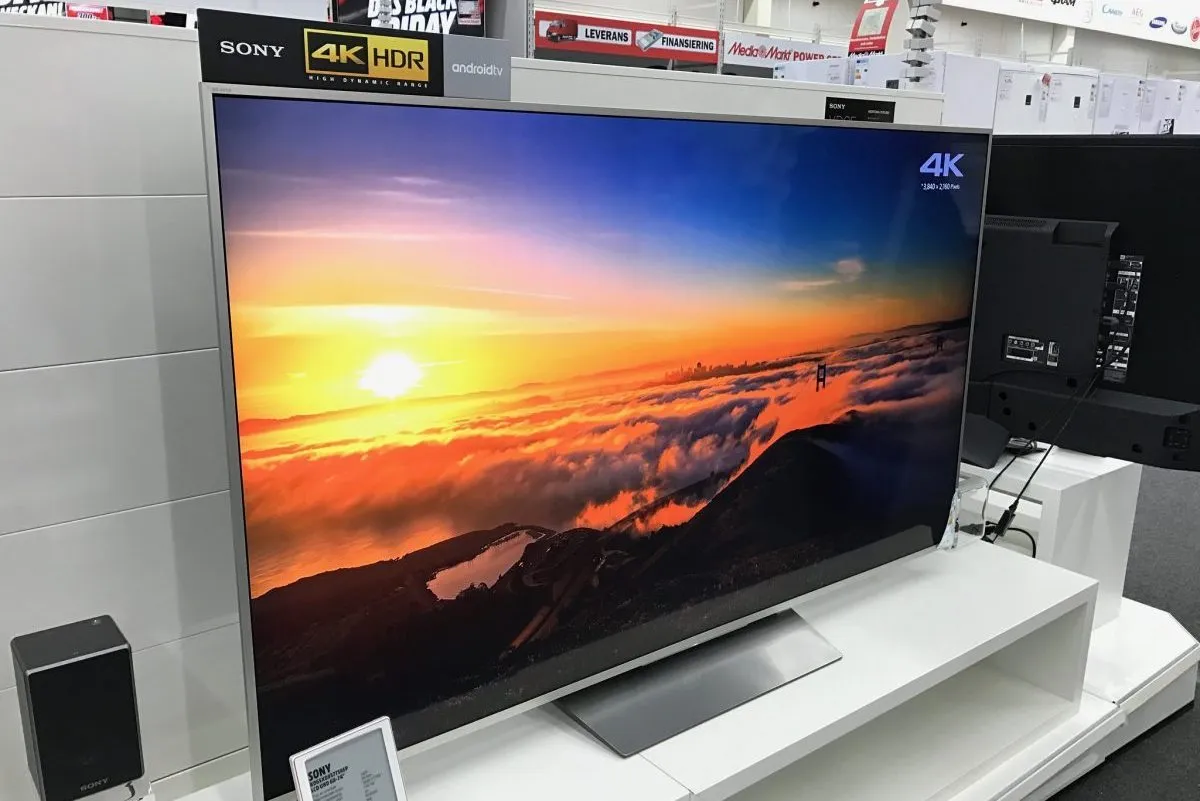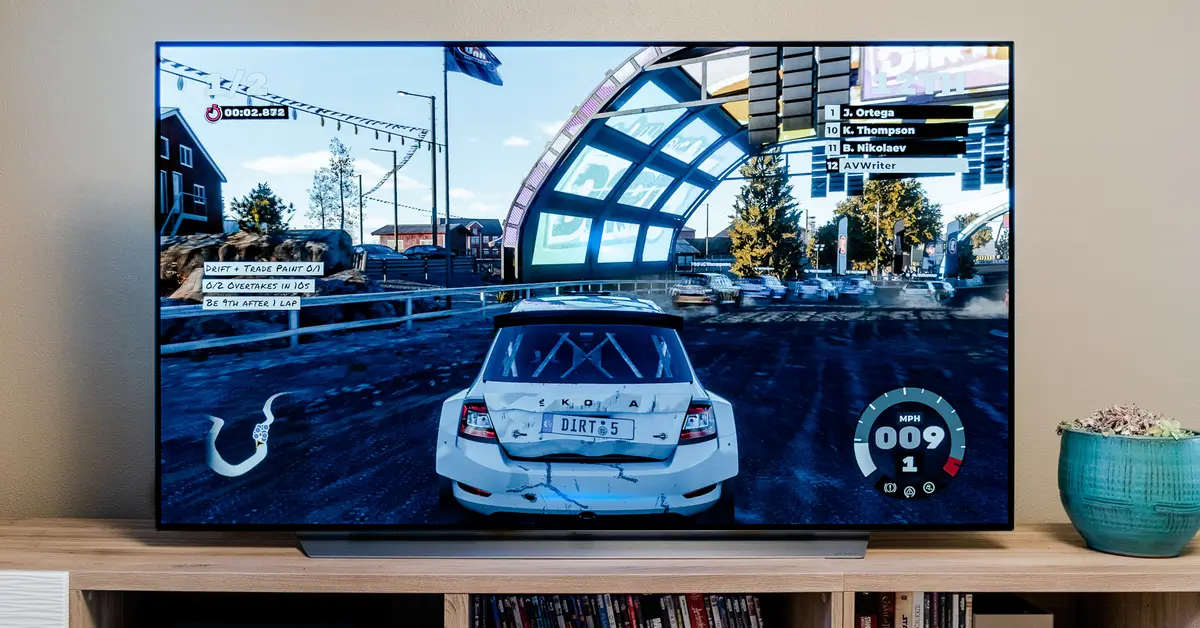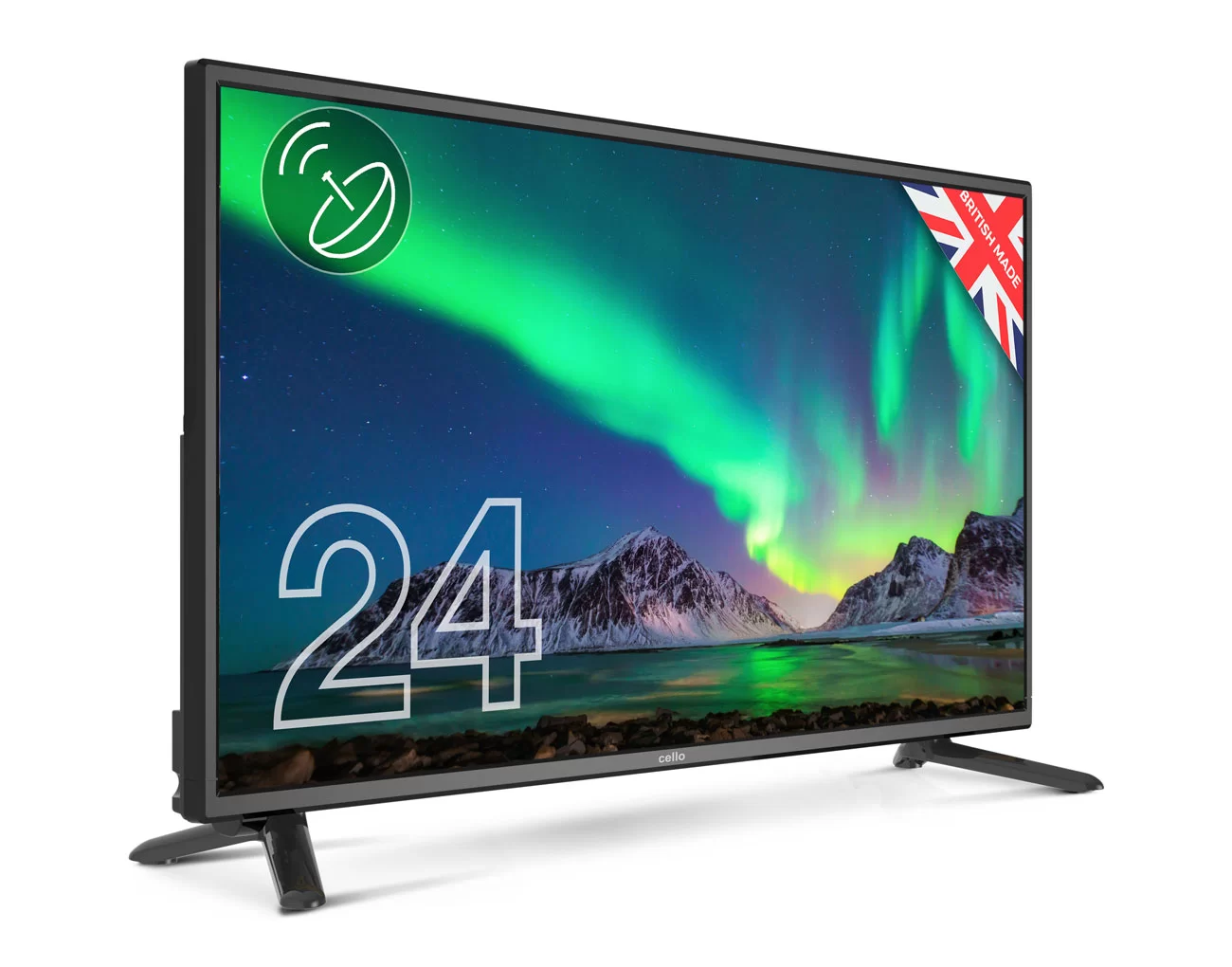Home>Technology>Home Entertainment Systems>What Is HDR Television?


Home Entertainment Systems
What Is HDR Television?
Modified: December 21, 2023
Discover the benefits of HDR television for your home entertainment system. Learn how HDR enhances your viewing experience and brings lifelike images to your screen. Explore the latest in home entertainment technology.
(Many of the links in this article redirect to a specific reviewed product. Your purchase of these products through affiliate links helps to generate commission for Storables.com, at no extra cost. Learn more)
Introduction
Welcome to the future of television viewing! High Dynamic Range (HDR) technology has revolutionized the home entertainment experience, offering viewers an unprecedented level of visual depth, clarity, and vibrancy. As the successor to standard dynamic range (SDR) television, HDR represents a significant leap forward in display technology, providing a more lifelike and immersive viewing experience.
HDR technology enhances the contrast and color range of images, resulting in a more realistic and captivating visual presentation. This remarkable advancement has redefined the way we perceive and enjoy television content, bringing a new level of realism to our screens. In this article, we will delve into the intricacies of HDR technology, explore its myriad benefits, and provide valuable insights into purchasing an HDR television.
So, whether you are a seasoned home entertainment enthusiast or someone considering an upgrade to your viewing experience, join us as we embark on a journey to unravel the wonders of HDR television. Let's dive into the world of HDR technology and discover the incredible advancements that are reshaping the way we enjoy our favorite movies, shows, and games.
Key Takeaways:
- Experience the future of TV with HDR technology, bringing vibrant colors, enhanced contrast, and immersive visuals to your favorite movies, shows, and games.
- When buying an HDR TV, consider display technology, HDR format compatibility, screen size, brightness, color accuracy, smart TV features, and audio performance for an elevated home entertainment experience.
Read more: What Is Television
Understanding HDR Technology
At the core of HDR technology lies the fundamental principle of expanding the dynamic range of visual content, allowing for a more extensive spectrum of colors and luminance. Unlike standard dynamic range (SDR) displays, which are limited in their ability to represent variations in brightness and color, HDR televisions can produce a far greater range of luminosity levels and color gradations. This results in images that are more true to life, with enhanced details in both the bright and dark areas of the picture.
One of the key components of HDR technology is its ability to achieve higher peak brightness levels, enabling the display to render specular highlights and bright elements in a scene with exceptional clarity and brilliance. Additionally, HDR enhances the reproduction of deep, rich blacks, contributing to a more striking contrast between light and dark elements within the image. This expanded contrast range significantly heightens the visual impact of the content, making the viewing experience more immersive and engaging.
Furthermore, HDR technology incorporates a wider color gamut, allowing for the depiction of a broader and more diverse range of colors. This extended palette enables HDR televisions to reproduce colors with greater accuracy and intensity, resulting in more vibrant and lifelike images. By capturing and presenting a more extensive array of colors, HDR technology brings a new level of realism to on-screen visuals, enriching the overall viewing experience.
It is important to note that there are different HDR formats, such as HDR10, Dolby Vision, HLG (Hybrid Log-Gamma), and Technicolor HDR, each with its own specifications and capabilities. These formats vary in terms of supported brightness levels, color depth, and metadata, influencing the overall HDR performance of a television. Understanding these formats can be crucial when selecting an HDR television, as compatibility with specific HDR content and sources may vary based on the supported format.
By harnessing the power of HDR technology, television manufacturers have unlocked a new realm of visual fidelity, allowing viewers to immerse themselves in content that is more captivating and true to life than ever before. The next section will delve into the myriad benefits of embracing HDR technology in the realm of home entertainment.
Benefits of HDR Television
Embracing HDR technology offers a multitude of benefits that significantly elevate the viewing experience, enriching the visual quality of on-screen content in various compelling ways. Let’s explore the remarkable advantages that HDR televisions bring to the forefront of home entertainment.
- Enhanced Visual Realism: HDR technology enables televisions to reproduce a wider range of brightness and color, resulting in visuals that closely mirror real-world environments. This heightened realism brings an unprecedented level of depth and detail to on-screen images, allowing viewers to immerse themselves in a more authentic and captivating viewing experience.
- Improved Contrast and Luminance: With HDR, televisions can achieve higher peak brightness levels and deeper blacks, expanding the contrast range and enhancing the overall visual impact. This heightened contrast and luminance contribute to sharper details, more pronounced textures, and a greater sense of dimension within the displayed content.
- Vibrant and Accurate Colors: HDR technology facilitates the reproduction of a broader color gamut, enabling televisions to display a more extensive and vibrant array of colors with enhanced precision and richness. This results in visuals that are more vivid, lifelike, and visually stunning, bringing a new level of vibrancy to on-screen content.
- Immersive Viewing Experience: By delivering enhanced realism, contrast, and color accuracy, HDR televisions create a more immersive and engaging viewing environment. Viewers can enjoy content with a heightened sense of depth, clarity, and detail, fostering a more captivating and immersive entertainment experience.
- Future-Proof Technology: Investing in an HDR television ensures compatibility with the latest and upcoming HDR content, including movies, shows, and games. As the entertainment industry continues to embrace HDR as the new standard for visual fidelity, owning an HDR television provides assurance that you can fully experience and appreciate the latest HDR-enhanced content.
These compelling benefits underscore the transformative impact of HDR technology on the home entertainment landscape, offering viewers a visually stunning and immersive viewing experience that transcends traditional display capabilities. As we continue our exploration of HDR television, we will delve into the standards and specifications that govern the implementation of HDR technology across different television models and content sources.
HDR Television Standards
When delving into the realm of HDR televisions, it’s essential to understand the standards and specifications that define the performance and capabilities of these cutting-edge display devices. Several HDR formats and standards have emerged, each with its own set of characteristics and requirements. Let’s explore the key HDR television standards that shape the landscape of HDR technology.
- HDR10: As one of the most widely adopted HDR formats, HDR10 sets the baseline for HDR content and display capabilities. It supports a maximum brightness of 1,000 nits and a 10-bit color depth, delivering vibrant visuals with enhanced contrast and color accuracy. HDR10 is commonly utilized in a wide range of HDR-compatible televisions and content sources, offering broad compatibility and accessibility.
- Dolby Vision: Renowned for its advanced dynamic metadata and support for up to 12-bit color depth, Dolby Vision represents a premium HDR format that elevates the viewing experience to new heights. With its dynamic tone mapping and scene-by-scene optimization, Dolby Vision-enabled televisions can deliver stunning visuals with exceptional brightness, contrast, and color precision, providing a truly immersive and cinematic viewing experience.
- HLG (Hybrid Log-Gamma): Developed to accommodate both traditional SDR displays and HDR-compatible televisions, HLG offers a versatile HDR standard that incorporates backward compatibility for legacy display devices. HLG is particularly well-suited for broadcast and live television content, allowing for seamless HDR integration while ensuring that SDR viewers can still enjoy content without visual degradation.
- Technicolor HDR: Leveraging Technicolor’s expertise in color science and image processing, Technicolor HDR aims to deliver a compelling HDR experience with a focus on color accuracy and artistic intent. This HDR format emphasizes the preservation of creative intent and color fidelity, enabling televisions to faithfully reproduce the director’s vision with exceptional precision and nuance.
Understanding the nuances of these HDR standards is crucial when selecting an HDR television, as compatibility with specific HDR formats can influence the range of content that can be fully enjoyed on a given television model. Additionally, the availability of HDR content in various formats underscores the importance of choosing a television that aligns with the preferred HDR standard to maximize the viewing experience.
As the industry continues to evolve and innovate in the realm of HDR technology, staying informed about the latest standards and advancements is essential for making informed decisions when investing in an HDR television. In the following section, we will explore the exciting world of HDR television content and the diverse array of viewing experiences it offers to audiences worldwide.
HDR television provides a wider range of colors and brighter highlights, resulting in more realistic and vibrant images. Look for content labeled “HDR” to experience the full benefits on your HDR-compatible TV.
HDR Television Content
The advent of HDR technology has ushered in a new era of visually stunning and immersive content, offering viewers a diverse array of HDR-enhanced movies, shows, and games that showcase the full potential of HDR televisions. From breathtaking landscapes to thrilling action sequences, HDR content captivates audiences with its vibrant colors, enhanced contrast, and striking visual fidelity. Let’s explore the captivating world of HDR television content and the myriad experiences it brings to home entertainment.
Movies: Many blockbuster films and cinematic masterpieces are now available in HDR, allowing audiences to experience these visual spectacles with unprecedented realism and visual impact. HDR enhances the depth and richness of on-screen visuals, bringing movies to life in a manner that transcends traditional viewing experiences. From epic adventures to intimate dramas, HDR elevates the cinematic journey, immersing viewers in a world of unparalleled visual splendor.
Television Shows: With an increasing number of television series embracing HDR technology, viewers can indulge in captivating narratives and compelling visuals that are brought to life with enhanced depth, clarity, and vibrancy. Whether exploring the intricate details of a crime scene in a detective thriller or witnessing the breathtaking landscapes of a nature documentary, HDR television shows offer a heightened level of visual immersion and realism.
Video Games: Gaming experiences are elevated to new heights with HDR technology, as it enhances the visual fidelity and immersive qualities of video game environments. From lush, vibrant landscapes to dynamic lighting effects and intense action sequences, HDR-enabled games deliver a more engaging and visually captivating interactive experience, allowing players to become fully immersed in the virtual worlds they explore.
Furthermore, streaming platforms and content providers offer a growing library of HDR content, providing viewers with an extensive selection of visually compelling and immersive entertainment options. Whether enjoying a thrilling action movie, binge-watching a captivating television series, or diving into the immersive worlds of video games, HDR content enriches the viewing experience and transforms the way audiences engage with their favorite forms of entertainment.
As HDR content continues to expand across various entertainment mediums, owning an HDR television ensures that viewers can fully appreciate the stunning visual quality and immersive experiences that HDR technology brings to the forefront of home entertainment. In the next section, we will delve into essential considerations for purchasing an HDR television, guiding audiences through the process of selecting the perfect display device to elevate their viewing experience.
Read more: What Are The Disadvantages Of Television
Buying an HDR Television
When embarking on the journey to purchase an HDR television, several crucial factors should be considered to ensure that you select a display device that aligns with your viewing preferences and technological requirements. Here are essential considerations to guide you through the process of acquiring the perfect HDR television to enhance your home entertainment experience.
- Display Technology: HDR televisions are available in various display technologies, including OLED, QLED, and LED/LCD. Each technology offers distinct advantages in terms of contrast, color reproduction, and viewing angles. Understanding the characteristics of these display technologies can help you make an informed decision based on your visual preferences and viewing environment.
- HDR Format Compatibility: Assess the HDR formats supported by the television, such as HDR10, Dolby Vision, HLG, and Technicolor HDR. Compatibility with multiple HDR formats can ensure broader access to HDR content across different sources, providing a more versatile and future-proof viewing experience.
- Screen Size and Viewing Distance: Consider the optimal screen size based on the viewing distance in your entertainment area. A larger screen size can deliver a more immersive viewing experience, but it’s essential to strike a balance that aligns with your available space and viewing preferences.
- Brightness and Contrast Performance: Evaluate the television’s peak brightness levels and contrast capabilities to ensure that it can deliver the stunning visual impact and dynamic range associated with HDR content. Enhanced brightness and contrast contribute to a more captivating and realistic viewing experience.
- Color Accuracy and Gamut: Assess the television’s color accuracy and the breadth of its color gamut. A wider color gamut and precise color reproduction are essential for showcasing the vibrant and lifelike visuals that HDR content is designed to deliver.
- Smart TV Features and Connectivity: Explore the smart TV capabilities and connectivity options offered by the television, including streaming services, app support, and connectivity with external devices. Seamless access to HDR content sources and a user-friendly interface can enhance the overall entertainment experience.
- Audio Performance: While the focus is often on visual quality, audio performance is equally important for a truly immersive viewing experience. Consider the television’s audio capabilities and the potential for connecting to external sound systems for enhanced audio immersion.
By carefully evaluating these factors and conducting thorough research on available HDR television models, you can make an informed decision that aligns with your viewing preferences and budget. Additionally, seeking out professional reviews and firsthand demonstrations can provide valuable insights into the performance and features of potential television options.
Investing in an HDR television is an opportunity to elevate your home entertainment experience, immersing yourself in visually stunning and captivating content that resonates with lifelike realism. As HDR technology continues to shape the future of home entertainment, selecting the right HDR television ensures that you can fully embrace the transformative visual experiences that HDR content offers.
With the knowledge and insights gained from this guide, you are well-equipped to embark on your journey to acquire an HDR television that will redefine the way you enjoy movies, shows, and games in the comfort of your home. As we conclude our exploration of HDR technology and its impact on home entertainment, we invite you to embrace the wonders of HDR and embark on a visual journey that transcends traditional viewing experiences.
Conclusion
As we conclude our immersive exploration of HDR technology and its profound impact on home entertainment, we reflect on the remarkable advancements that have reshaped the way we experience visual content. HDR technology has ushered in a new era of captivating realism, vibrant colors, and enhanced contrast, offering viewers an unprecedented level of visual immersion that transcends traditional display capabilities.
From the enhanced visual realism and improved contrast to the vibrant and accurate colors that HDR technology delivers, the benefits of embracing HDR television extend far beyond mere visual enhancement. HDR content, spanning movies, television shows, and video games, captivates audiences with its stunning visual fidelity, inviting viewers to immerse themselves in a world of unparalleled visual splendor and immersive storytelling.
Understanding the diverse HDR television standards, including HDR10, Dolby Vision, HLG, and Technicolor HDR, empowers consumers to make informed decisions when selecting an HDR television that aligns with their viewing preferences and content sources. The availability of a wide range of HDR content further underscores the transformative impact of HDR technology, offering viewers a diverse array of visually compelling and immersive entertainment options.
As consumers navigate the process of purchasing an HDR television, essential considerations, such as display technology, HDR format compatibility, screen size, brightness and contrast performance, color accuracy, smart TV features, and audio performance, guide them toward selecting the perfect display device to elevate their home entertainment experience.
Embracing HDR technology represents a gateway to a world of captivating visual experiences, where the boundaries between on-screen content and reality blur, allowing viewers to indulge in visually stunning narratives, breathtaking landscapes, and dynamic gaming environments with unparalleled realism and vibrancy.
As the entertainment industry continues to embrace HDR as the new standard for visual fidelity, owning an HDR television ensures that viewers can fully appreciate the latest HDR-enhanced content, future-proofing their home entertainment setups for the immersive experiences that lie ahead.
With the knowledge and insights gained from our journey through the world of HDR technology, audiences are empowered to embrace the wonders of HDR and embark on a visual journey that transcends traditional viewing experiences. The future of home entertainment is illuminated by the brilliance of HDR technology, inviting viewers to immerse themselves in a world of captivating realism and breathtaking visuals.
As we bid farewell to this exploration, we invite you to embrace the transformative potential of HDR technology and embark on a visual journey that transcends traditional viewing experiences, immersing yourself in the captivating world of HDR-enhanced content.
Frequently Asked Questions about What Is HDR Television?
Was this page helpful?
At Storables.com, we guarantee accurate and reliable information. Our content, validated by Expert Board Contributors, is crafted following stringent Editorial Policies. We're committed to providing you with well-researched, expert-backed insights for all your informational needs.















0 thoughts on “What Is HDR Television?”